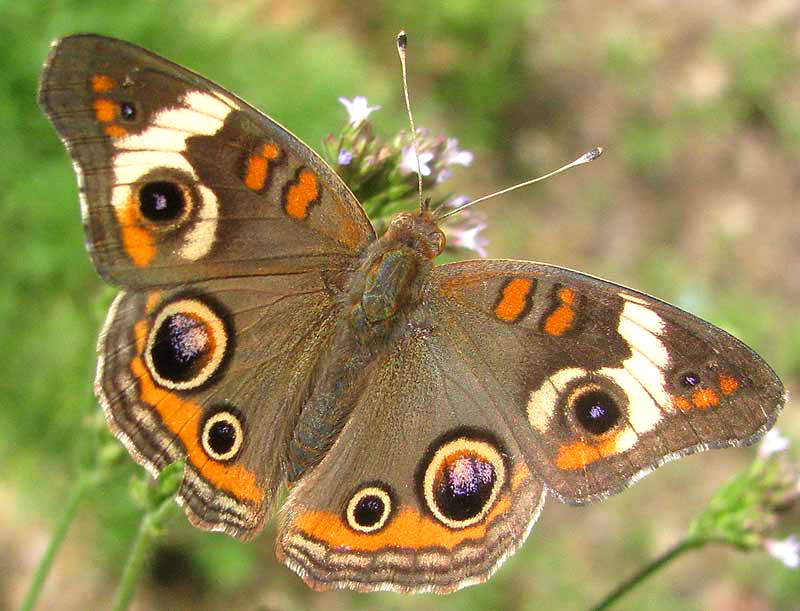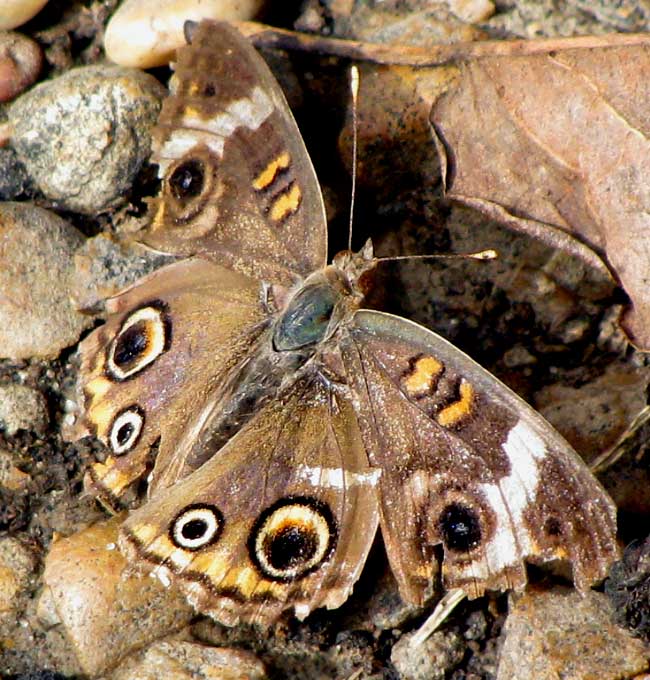Excerpts from Jim Conrad's
Naturalist Newsletter

from the June 10, 2012 Newsletter issued from the woods of the Loess Hill Region a few miles east of Natchez, Mississippi, USA
A FRESH-LOOKING BUCKEYE BUTTERFLY
Below we look at a faded Buckeye Butterfly photographed at the end of the season in November, 2009. This week the brighter one above flitted by. It's worth noticing the difference in the colors!

from the November 1, 2009 Newsletter issued from the woods of the Loess Hill Region a few miles east of Natchez, Mississippi, USA
BUCKEYE BUTTERFLY
Common Buckeye butterflies, JUNONIA COENIA, are widespread across most of North America south of the Canadian taiga, and south all the way through Mexico and Central America into Columbia. Their wings' large "eyes" and two orange "corporal stripes" make them easy to identify except in southern Florida and southern Texas where other buckeye species occur. Our "Common" on a gravel road in Anna's Bottom is shown above.
Several butterfly species, among them various wood nymphs, satyrs and ringlets, bear conspicuous eyes on their wings but none has eyes as eye-catching as the buckeyes', plus other species lack the corporal stripes. The individual in the picture looks like an old veteran because of various gashes in his wing margins, some suspiciously in the wedge-shaped form of bird beaks.
In North America Buckeyes tend to migrate northward early in the year, then in the fall head back southward. I read that in places such as Cape May, New Jersey, in October hordes of Buckeyes drift southward rivaling the migrations of Monarchs "in number and spectacle." They're permanent residents in the Deep South, however.
One reason Buckeyes are so common and widespread is because of their ecological flexibility: Their caterpillars feed on a variety of plant types, especially members of such common plant families as those of the Snapdragon, Plantain and Acanthus Families.